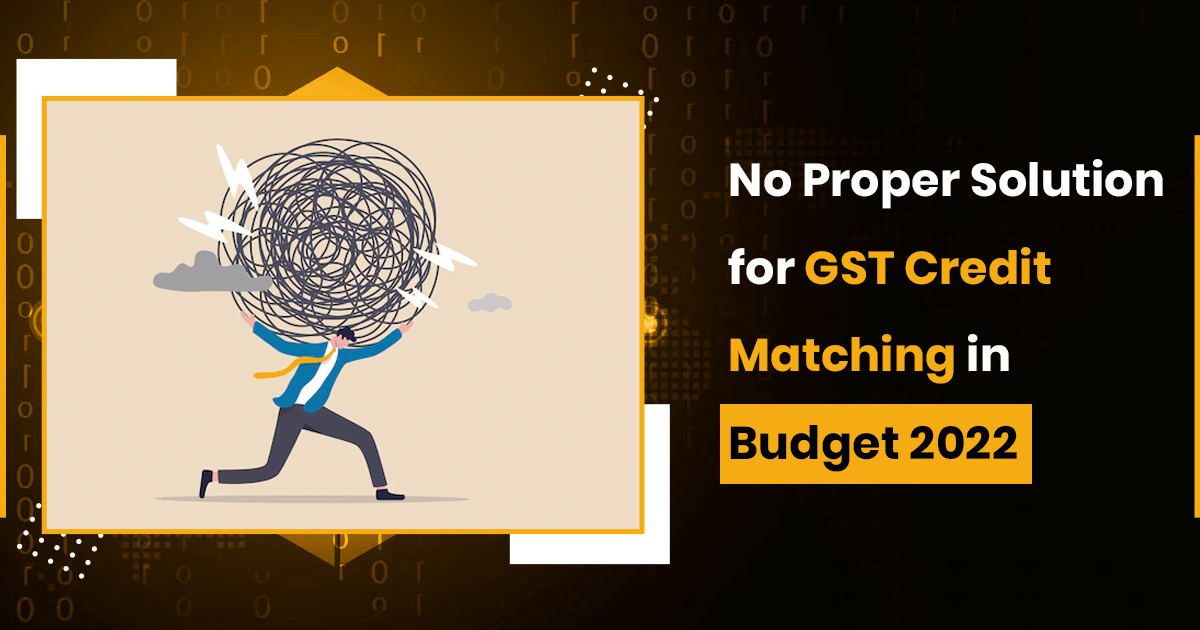
Budget showcases the subsequent phase of the tax administration assisted by the digitization and central integration and the state-level framework via IT bridges and elimination of overlapping adherence.
But for the GST the Finance minister does not indicate the suggested amendments in the compliance procedure and the technology infrastructure preparedness. Because one reads about the effective print of the finance bill, trust-based governance does not seem to be expressed effectively or influence it, particularly when one studies the dispensation of the two-way communication in the return filing.
The ITC credit matching concept in GST is an ambitious aspiration. The two-way communication procedure between the supplier and the recipient was a higher belief that gets executed in a successful way. In 2017 when credit matching was incorporated then it seems that it would be a perfect method however the execution carried on to face the challenges on to stay both for taxpayers and tax administrators correspondingly.
Section 43A was suggested to begin for setting the procedure that seeks to permit the recipient to validate, verify, edit or remove the information. On the GST portal, the draft note is to be circulated for the execution of the same and mandatory structure. But the technological inadequacies and challenges that haunted the industry in the former times will be carried on to remain a restriction in the execution of the same project.
The governments to solve out to permit the input tax credit upon the grounds of the credit matching rendered towards the insurmountable issues for the industry and the beginning of Rule 36(4) to restrict GST credits up to 5% is subjected for credit when the supplier losses to follow the rules and then pointed to enough cash flow conditions to the assessee.
Through the proposed omissions of sections 42, 43, and 43A the redundant provisions have ditched post to 5 years. But the elimination of the former and the start of the latest procedure brings responsibilities upon the recipient to ensure supplier compliance prior to avail the tax credits. The changes despite proposes to impose the interest on the recipient towards the errors upon the supplier’s portion.
The same revealed to be the opposition of distinct courts in which the same is furnished that the recovery of the ITC via recipient would seek excluding the first exhausting the remedy of the recovery from the suppliers who have collected the GST from the recipient however not able to remit that to the government. The changes to reopen the case towards the newer judicial verify when the assessee questions the same as strict particularly in the absence of any locus standi for the recipient to insist the supplier to follow it.
Section 38 proposes that the auto-generated statement must be generated through the government or portal taking out the information of the inward supplies upon which the credit is available and the inward supplies on which the credit would not be obtained on the basis of the supplier being in default or non-compliance. The measure for the execution of the procedure is being made available. Transparencies would be hoped prior to executing the amended credit claim procedure.
The daily challenges for business operations should seek by the trades and sectors. In this overall case, a big relief seems to be the facility to again take the tax credit if the supplier ultimately complies, but it is not transparent if the furnished interest by the assessee for the default of the supplier is to be returned.
Government has enough time to emphasize its commitment to ‘minimum government & maximum governance’. But the FM mentioned the requirement for “the right balance between facilitation and enforcement has engendered significantly better compliance” on budget day. The same is to be monitored that how the proposed revisions do elevate the minimum difficulty and simplify the compliance for the assessee.